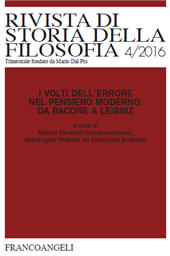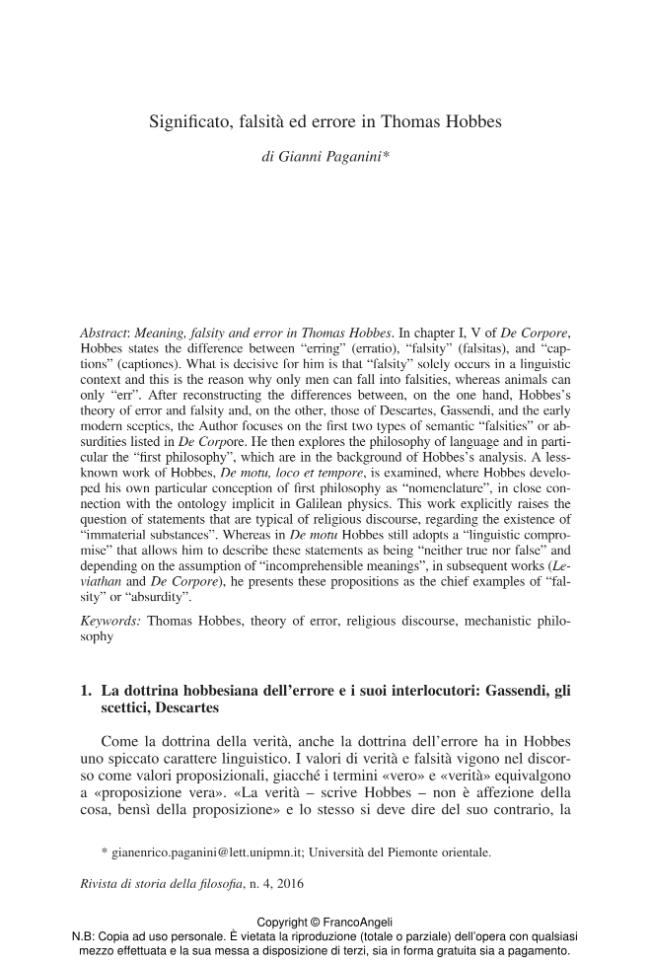Significato, falsità ed errore in Thomas Hobbes
579-598 p.
In chapter I, V of De Corpore, Hobbes states the difference between "erring" (erratio), "falsity" (falsitas), and "captions" (captiones). What is decisive for him is that "falsity" solely occurs in a linguistic context and this is the reason why only men can fall into falsities, whereas animals can only "err". After reconstructing the differences between, on the one hand, Hobbes's theory of error and falsity and, on the other, those of Descartes, Gassendi, and the early modern sceptics, the Author focuses on the first two types of semantic "falsities" or absurdities listed in De Corpore. He then explores the philosophy of language and in particular the "first philosophy", which are in the background of Hobbes's analysis. A lessknown work of Hobbes, De motu, loco et tempore, is examined, where Hobbes developed his own particular conception of first philosophy as "nomenclature", in close connection with the ontology implicit in Galilean physics. This work explicitly raises the question of statements that are ty
pical of religious discourse, regarding the existence of "immaterial substances". Whereas in De motu Hobbes still adopts a "linguistic compromise" that allows him to describe these statements as being "neither true nor false" and depending on the assumption of "incomprehensible meanings", in subsequent works (Leviathan and De Corpore), he presents these propositions as the chief examples of "falsity" or "absurdity". [Publisher's Text].
Fait partie de
Rivista di storia della filosofia : LXXI, 4, 2016-
Articles du même numéro (disponibles individuellement)
-
Informations
Code DOI : 10.3280/SF2016-004003
ISSN: 1972-5558
KEYWORDS
- Thomas Hobbes, theory of error, religious discourse, mechanistic philosophy



